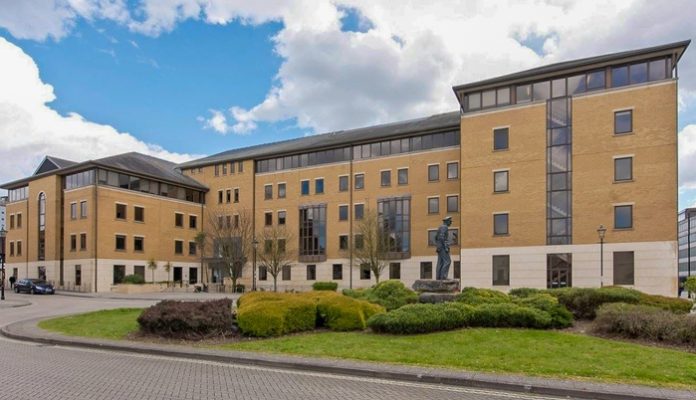Throughout 2018, the South Coast leasing market was predominantly driven by out of town activity, with Solent Business Park leading the way. Here, Lockheed Martin secured 7,759 sq. ft., National Air Traffic Control took 17,685 sq. ft., Specsavers acquired 17,207 sq. ft. and Shoosmiths 12,500 sq. ft. These latest transactions bring availability on the park down to 7%, the lowest level seen in over 10 years.
The City Centre and surrounds take up was 39,721 sq. ft. (2017: 33,000 sq. ft.) in the second half of 2018 and 85,092 sq. ft. (2017: 88,387 sq. ft.) for the year, but overall the difference was marginal in real terms. However, take up along the M27 corridor totalled 260,000 sq. ft., in line with the 5-year average of 250,000 sq. ft.
Ocean Network Express and Prestige Cruise Lines expanded at Mountbatten House. MOSL moved its whole operation out of London to Southampton City Centre and WP Group relocated its Fuels HQ from Fawley to Grosvenor House, the first time in over 50 years that it hasn’t been close to the refinery. Several occupiers committed to freehold purchases with Dandara acquiring Roman House in Totton and Templars House in Chandlers Ford.
Commenting on the research, James Brounger, Managing Director CBRE South Central said:
“The office leasing market on the South Coast has been substantially driven by out-of-town activity in 2018. Although City Centre take-up was slightly down, there was more activity in the second half of the year and this year has started well.”
DEMAND
In 2019, prospective tenants will continue to be restricted by the lack of choice, particularly in the city’s northern suburbs such as Eastleigh and Chandlers Ford. High quality City Centre refurbishments are coming on stream, including Imperial House, Oceana House and 1 Dorset Street. Such schemes will help mitigate against similar supply constraints in the core, but there remains a limited supply of Grade B stock.
SUPPLY
The decline in ready-to-occupy supply, now standing at 174,972 sq. ft., slowed during 2018, and has come as a result of seven successive years of reduced supply. During this period Southampton lost many second-hand office buildings to other uses, particularly residential.
Looking ahead, supply levels will be controlled by any space that is released back to the market as there are currently no office sites in development and it is unlikely any new schemes will commence in the short-term, unless secured by a significant pre-let. This does provide a window for investors and developers to undertake refurbishments on suitable properties, allowing those buildings to stand out from the rest of the market.
Southampton prime rent currently stands at £21.00 per sq. ft. and it is expected to remain stable during the year, as stock that is on the market is relatively similar in quality.
INVESTMENT
In comparison with other sectors (industrial), the South Coast office investment market has been somewhat limited, but generally consistent when compared to previous years. The low activity is as a result of lack of stock rather than lack of investor demand. Institutional funds, local authorities and local property companies have been the most active in the market.
Typical of such a deal came at the end of last year with the sale of West Park House. CIFCO Capital Ltd (the investment arm of Babergh and Mid Suffolk district councils) acquired the City Centre property, fully let to law firm Paris Smith, for £5.095m, a net initial yield of 5.98%.
Investors have now begun to look out of London in an attempt to improve their yield profile. This is likely to continue to drive demand in the local market while the competition for assets in London drives yields to record lows. In Southampton there is little competition between its neighbouring cities, largely due to a lack of any premium stock availability in either Portsmouth or Bournemouth. There is very limited stock on the open market in Southampton and while refurbished buildings are entering the rental market, the local landlords are happy to hold onto these assets.
A major new investor type in the region is local authorities. Eastleigh and Portsmouth are particularly active, although the motivation for entering the investment market seems to be different for each. Eastleigh is more geared to regeneration projects within its own borough, whereas Portsmouth is more focused on income.






















